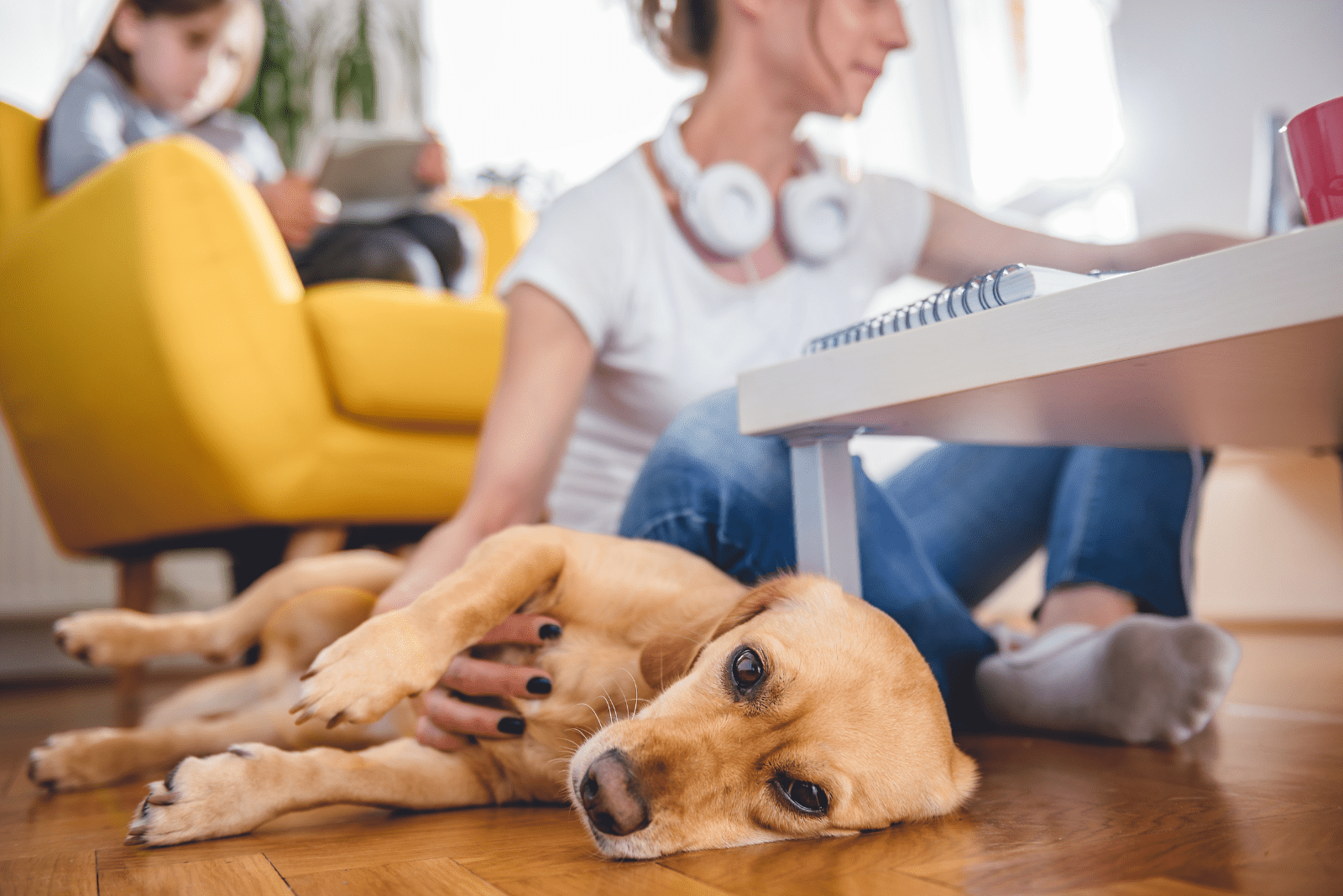Ugh, what’s with all this hair around the house? Is it shedding season already?
No, the shedding season isn’t the main culprit for that crazy amount of dead dog hair on your sofa. You should look for causes elsewhere. Maybe with your dog?
Something’s going on with your Fido and I know you’re demanding answers on how to stop dog shedding and why it happens all of a sudden.
I’ve got your back. You’re not alone. Lots of dog owners experience the same issue and hate the cleaning part. And guess what? The cause is usually something that can be changed for good, like so!
Your dog will always shed, especially if it’s not a hypoallergenic breed. You will need to embrace the daily shedding and learn how to cope if you experience excessive shedding once again.
I’m here to explain to you why dogs shed, all the different types of coats, how to handle excessive shedding, which factors make it worse, and even to show you some home remedies and grooming tips.
Stay tuned because things are about to get… hairy!
How To Stop Dog Shedding?
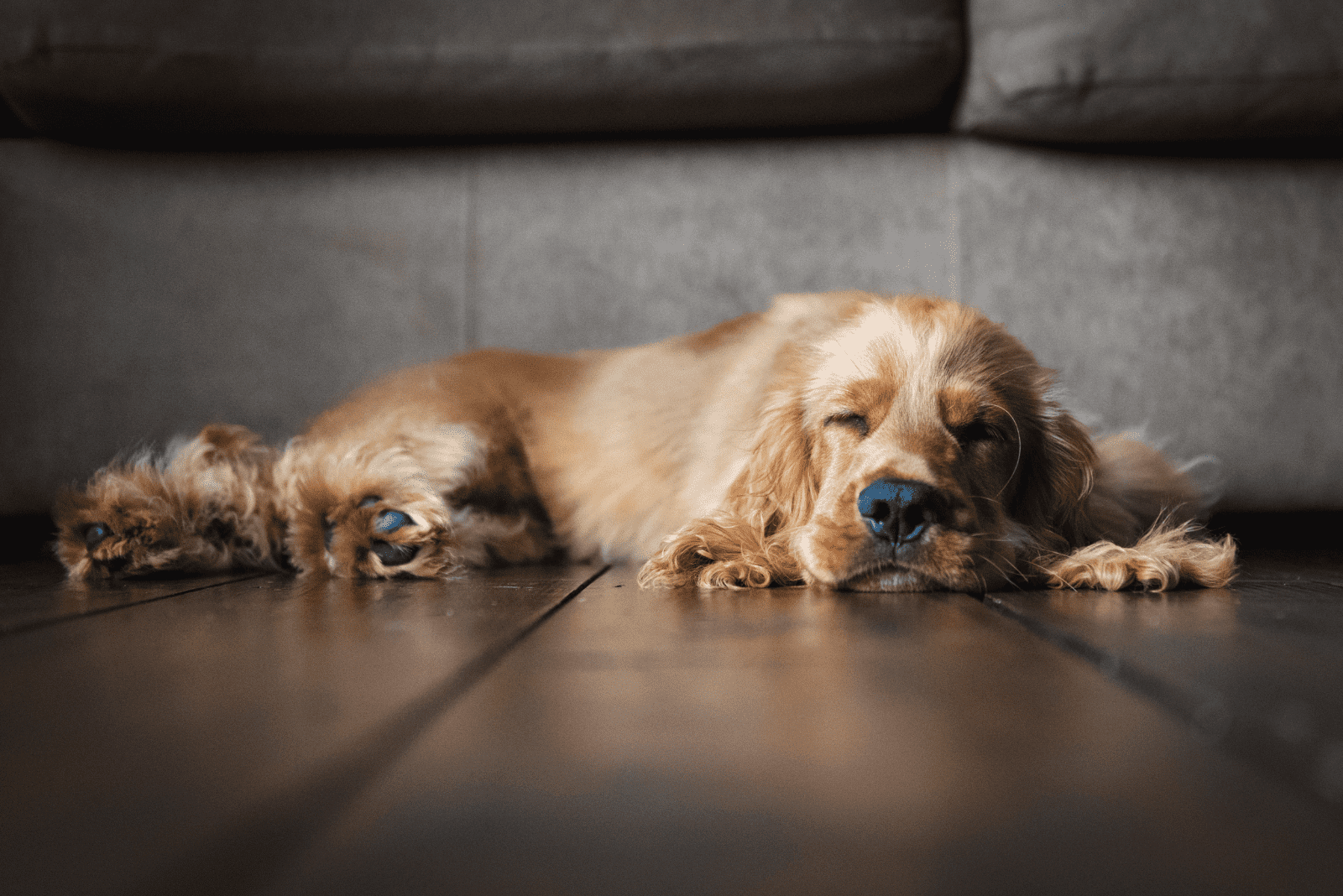
I’m sorry to inform you, but all dogs shed if you didn’t notice.
Well, all dogs that aren’t hypoallergenic.
Losing hair and getting new ones is a natural process that sometimes gets disturbed. We should be able to tell apart regular shedding and excessive shedding.
Before we go in-depth about dog shedding, you should understand one thing: there’s no way that you can stop your shedding dog from going through this process. So, stop wondering how to stop dog shedding. You can’t.
But you can control it.
Working on a magical solution that will reduce the shedding to a bare minimum is a tough task. It requires time and lots of effort. It’s complex on so many levels. Simply put, you should have your dog lead an ideal life out of textbooks. But that’s not so likely to happen.
What Is Excessive Shedding And Is Your Dog Experiencing It?
First, you need to know all there is about your dog’s coat. Single coats and double coats don’t shed the same way. You can’t expect the same amount of loose hair from a Dachshund and a German Shepherd. The first one has a sleek coat that doesn’t shed too much, and the other one is a big dog with a thick coat that will shed like crazy.
So, which coat type does your dog have?
Excessive shedding will be noticed with a sudden change in your lifestyle. Do you notice more dead hair flying around the house? Does it seem like your dog looks somehow…different? Well, he’s definitely going through an excessive shedding process.
But why is that so? Why is your Fido losing chunks of his coat when he was looking good just yesterday?
The reasons behind it are numerous, and we will discuss them all.
When Do Dogs Shed?
If you don’t own a hypoallergenic dog, then your buddy will shed all the time. But the difference is in the amount of dead hair.
The shedding depends on the type of coat your dog fashions, which we’ll talk about soon.
Dogs shed year-round, but it’s a general rule that dogs shed more, twice a year, during seasonal coat blowouts. The excessive shedding should happen in the spring and fall, to help dogs prepare for summer or winter. During the spring shedding, dogs grow a lighter coat so they don’t get too hot. Fall shedding prepares a thick, winter coat.
But not every life stage or condition brings the same amount of shedding. Senior dogs may shed more due to the changes in their metabolism. Puppies don’t shed that much, but they still tend to lose their puppy coat as they grow.
Types Of Dog Coat
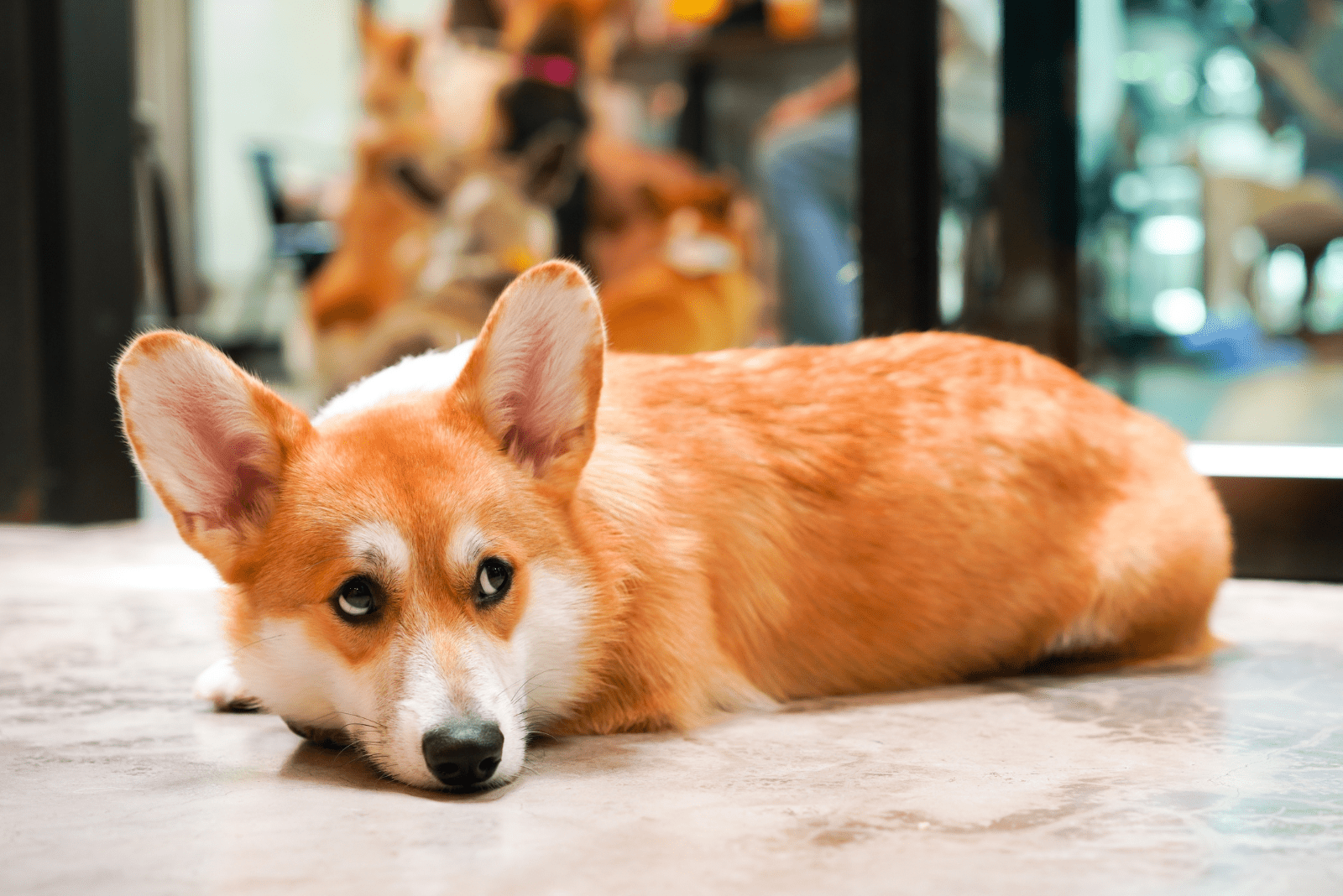
I can’t emphasize enough how important it is to know your dog’s coat type. Everything starts from there. Issues may occur if you’re unfamiliar with your dog’s coat type and you use the wrong brushes for treating it.
To help you figure out which coat type your dog has, here are all of them explained!
Smooth Coats
When a dog has a smooth coat, its hair lies close to the skin. Usually, such dogs don’t have double coats. Their smooth hair is silky soft to the touch and shiny. Even though some may think they’re hypoallergenic for having such a sleek coat, these dogs are definitely not hypoallergenics.
They’re breeds like Bulldogs or Dachshunds, and they need daily brushing. If you practice this, your smooth-coated dog won’t shed that much.
Double Coats
Just as the name says, double coated dogs have two coats. The first layer is a top coat with usually coarse hair. Those hairs serve as protection, and they’re often called guard hairs. Underneath them is an undercoat. It’s fluffy and soft and provides the dog with much-needed warmth.
Dogs with double coats like Corgis, Huskies or German Shepherds need lots of grooming too. They will also need coat stripping when the shedding season comes because they tend to shed around the house like crazy.
Silky Coats
Silky coats are one of the prettiest coats of all. They’re silky soft to the touch, obviously, and have a lovely shine. These coats are normally long and straight. For example, Cocker Spaniels and Golden retrievers are dogs with silky coats, and we all know how lovely-looking they are.
Of course, daily brushing is implied.
Wiry Coats
Dogs with wiry coats can either have completely wiry coats, or smoother versions. Not every breed that has wiry coats has the same type. Some are coarse to the touch, while others will make you wonder if it’s really a wiry coat.
Dogs that have this type of coat need daily brushing too. Those dogs are pups like wirehaired Dachshunds, Brussels Griffons, etc.
Curly Coats
Curly coats can either be super curly and corded or loose like waves. Poodles are known for their curls. However, dogs with corded hair like Komondors need professional grooming. These are big, hypoallergenic dogs, but they’re not easy to groom. You can’t just grab a brush and mess with those cords. However, pups with looser curls can enjoy a brushing treatment at home.
Are There Really No Shedding Dogs?
The no-shedding dog may or may not be a myth.
For as long as dog allergies have been around, people have wanted to get a dog that won’t spread his dead hairs all over the place and make them sneeze. Unfortunately, dog-related allergies have become worse.
We have come to a finding that it’s not only the dog hair that triggers a reaction; it’s dander and saliva too.
So, is there such a thing as a no-shedding hypoallergenic dog?
No.
A 100% no-shedding dog doesn’t exist. Well, if you count out hairless dogs like the Mexican Hairless. But any dog with just a little bit of hair will shed. Hypoallergenic dogs are great because they rarely have any smell, they don’t spread dandruff, and don’t shed too much at all.
Occasionally, they will lose some hair, but that won’t be too significant. We can call those dogs low-shedding canines too. Also, these dogs are low-maintenance too, so if you’re looking for such a dog, you know which breeds to look for.
Yorkies are hypoallergenic, and Shih Tzus share the same hypoallergenic traits. However, Corgis are definitely not low-shedding and they trigger allergies.
Which Factors Affect The Excessive Shedding?
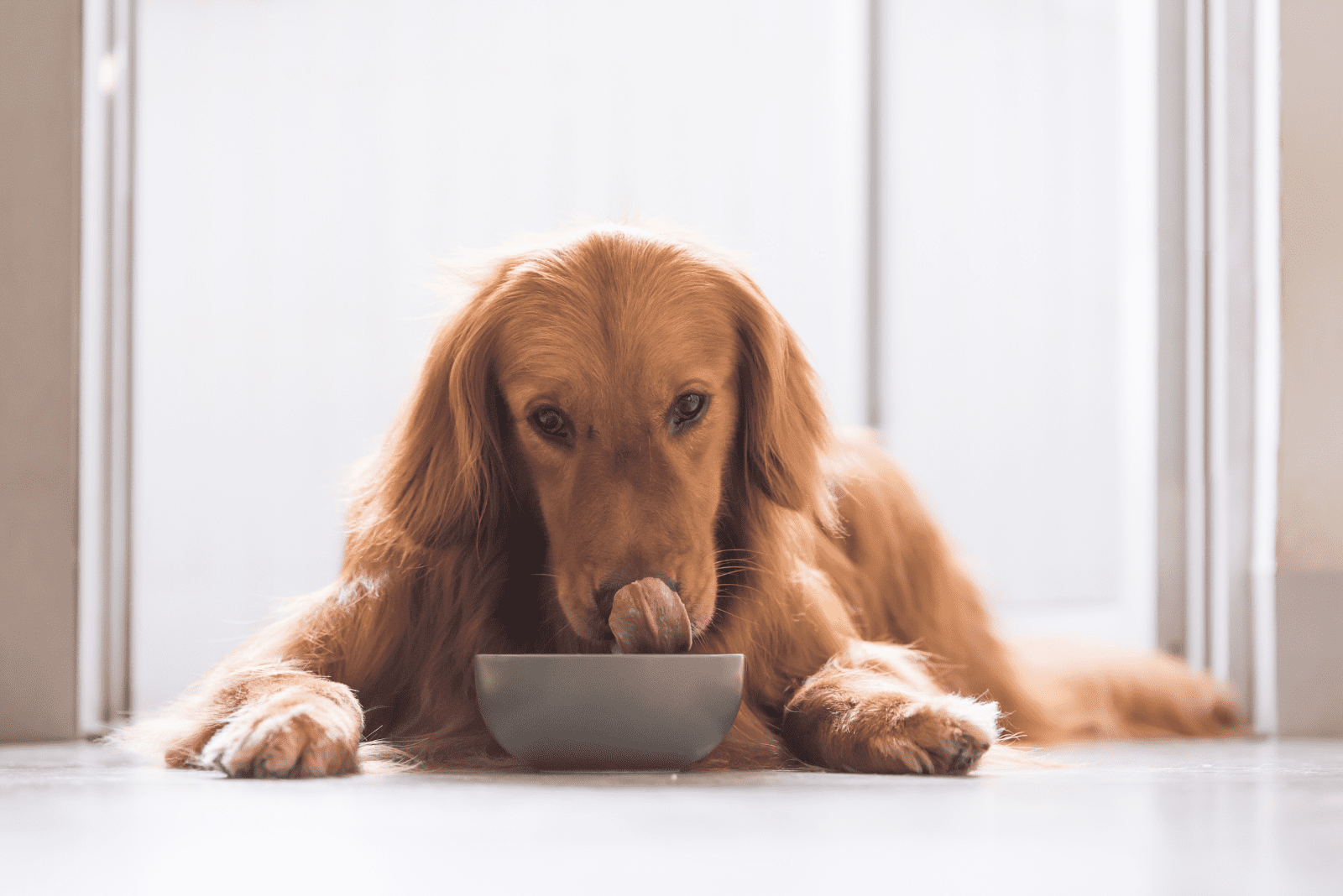
As I said, there are numerous factors that will affect your dog’s shedding. But the good news is that most of them can be controlled by you.
Some of these factors are not that severe, while others are. You’ll learn to figure out which affects your dog more than others.
Poor Nutrition
One of the most obvious reasons why your dog is excessively shedding is the poor nutrition he’s having.
Feeding a dog the right way means more than just putting kibble into his bowl. There’s a whole science behind it, and you should show interest in it. It’s not like you’re becoming a canine nutritionist, but you should know what the basic dos and don’ts are.
Every rookie dog owner seems to make the same mistake. He buys the first bag of dog food that seems alright. Things get even worse when they buy kibble just because it’s cheap.
If your diet isn’t cheap, why should your dog’s be that way?
Dogs are living beings and they need food to grow, have energy, and function normally. A dog can barely function alright if he eats kibble packed with poor nutrients. His overall condition will be poor too!
The first signs of your dog disliking the food will be noticeable on his coat. Sometimes, your dog will lose hair around his eyes or around other areas on his coat. When a dog lacks nutrients, his coat will become lifeless, full of hair chunks that stick out everywhere. The coat has no shine, and your dog looks just sad.
However, if you introduce high-quality kibble or even raw dog food, you’ll notice an improvement in no time. Dogs that are on a good diet packed with proteins, vitamins, minerals, and other nutrients shed just as much as they’re supposed to.
Hydration
Keeping your dog hydrated is as important as keeping him fed.
Water makes up most of our bodies. We’re designed to consume enough water on a daily basis to keep our cells regenerating.
Dogs should consume plenty of water too, but not as much as humans. The recommended amount is one ounce for every pound of the dog’s weight. You should make sure the water is clean, so if your tap water is fine, your dog can drink it too. There’s no need in buying bottled water for Fido.
Most dog owners don’t realize that lack of hydration can mean a severe problem for their dog’s skin. Dogs that aren’t hydrated enough have dry skin and irritations. If the dog has dry skin for a while, it will affect the hair follicles and thus cause excessive hair loss.
The water bowl should always be full of fresh water. If you see your dog avoiding the water bowl, you should have him checked by the vet because that dog might have kidney failure or a UTI.
Stress
One of the biggest problems of modern days is stress. We all live with it, but rarely does anyone cope well with stress. Dogs can feel stress too, especially if they’re not socialized the right way.
Dogs that have issues with socialization feel stress when around other people or dogs. They don’t like loud noises, strange smells, and unfamiliar surroundings. They all cause stress for canines.
The most significant stress trigger is staying home alone. Leaving your puppy alone at home for the first time is extremely stressful.
When a dog owner goes out and doesn’t take along his dog, chances are that dog will begin to suffer from separation anxiety. It’s a severe condition that comes from the stress of being alone for too long.
The solution isn’t to avoid putting your dog through stressful situations. The solution is to have your dog socialized and teach him it’s okay to meet new faces, hear new sounds, or even stay alone for a while.
You can always recognize a stressed-out dog by its scruffy-looking coat without any shine. They look scared and some even shake.
Which Health Conditions Affect The Excessive Shedding?
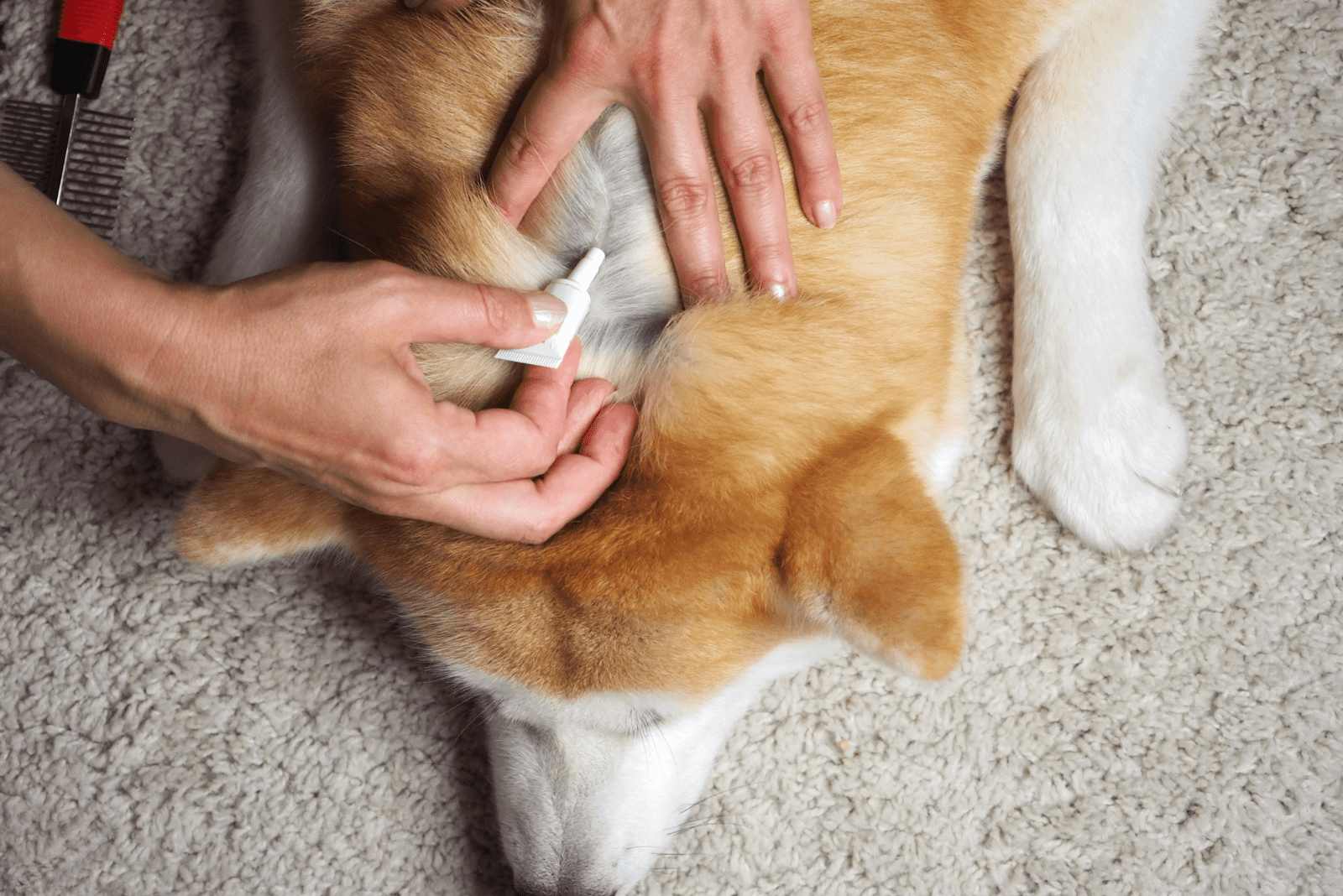
What every pet parent dreads the most is having their four-legged BFF suffer from any health condition. Skin problems aren’t usually life-threatening, but they’re tiring and painful for both our dogs and us owners. For example, Pugs are highly prone to skin conditions.
From fleas to irritations and more severe skin conditions. There are things not even a healthy diet can solve. What you need is a vet’s assistance and a topical treatment for a specific area. There’s a thin line between losing dog’s fur and developing patches of dry skin, open wounds, or even mange.
We’re about to discuss which health conditions affect your dog’s coat, excessive shedding, and overall health status!
Fleas
Fleas are the most common reason why you see pet hair all over the place. It’s not that your dog is dirty or something. He could’ve picked up fleas from anywhere in the park, or from other dogs.
Flea bites will hurt your dog. They cause itchiness and skin inflammation, which can lead to secondary skin infections, and thus hair loss.
Demodectic Mange
This condition is also quite frequent among dogs. Demodectic mange is caused by a parasitic mite. What this mite does is infect the hair follicles and weaken the immune system of your dog.
This is a severe condition that results in hair loss. Some cases are so difficult to handle that the only humane option is euthanasia.
Dogs with demodectic mange shouldn’t be in touch with other dogs, not to mention be bred.
Skin Allergies
Skin allergies can happen for multiple reasons. Usually, your dog will show signs of allergic reactions because the food you’re giving him doesn’t suit his needs. Most often, there will be something in the recipe your dog is allergic to.
You should find the trigger and eliminate it from your dog’s diet.
Also, skin allergies will appear if you use harsh chemicals to bathe your dog. So, no, washing your dog with Head & Shoulders is NEVER a good idea. Always pick natural ingredients and soothing shampoos to prevent reactions.
Skin Infections
Bacterial and fungal infections aren’t something unusual for dogs. They’re common, but that doesn’t mean they’re normal.
Red, itchy, and flaky skin is a clear sign your dog has caught a bug.
The bugs that usually affect your dog’s skin are ringworms, staphylococcus, sarcoptic mange,
Atopy
Atopic dermatitis or atopy occurs when the skin reacts with some airborne factor which enters the skin through a defective patch. Atopy is not a condition that can be cured. Your dog will live with it and receive treatment for life.
The important thing is to treat the atopic area and not allow your dog to scratch it, otherwise, he will make wounds on the skin.
Hypothyroidism
Thyroid problems are quite common with lots of dog breeds. One of the first signs something’s wrong with your dog’s thyroid gland can be hair loss.
Usually, it happens all of a sudden and the owner will rarely doubt it’s hypothyroidism. The hair will start to become thinner and thinner each day.
Home Remedies To Prevent Excessive Shedding
Believe it or not, there are ways that you can prevent excessive shedding at home, and I don’t mean by brushing all the time.
Sure, brushing will reduce a significant amount of dead hair, but the most important thing is to find the cause behind all that shedding.
Mostly, dogs with poor diets need extra help with their shedding. Now, I’m not saying those dogs are necessarily eating the worst-quality dog kibble. Maybe they’re just missing some ingredients that could stop their hair from falling out.
Using supplements is absolutely okay if your vet agrees with you but try not to pick them on your own. Ask for guidelines so you can offer your dog exactly what he needs.
We can divide supplements into two categories: supplements from the store and homemade supplements.
Store-bought Supplements
Nothing is wrong with store-bought supplements. We can’t make these things at home. If you’re one of those people that enjoy taking vitamins as additions to their diet, you’ll understand why your dog may need supplements too.
For a shinier, less shedding dog coat, veterinarians recommend plenty of omega-3. These fatty acids will ensure your dog’s skin is nice and elastic, and his coat is shiny and strong again.
Omega-3 fatty acids can come from plant-based sources and marine-based sources. If you’re a vegan and like to lead your dog through such a lifestyle, you’ll appreciate the plant-based sources more. Ingredients like flax seeds, hemp seeds, chia, and green veggies are so rich in omega-3.
You can either buy an omega-3 product from the pharmacy featuring those ingredients, but I also recommend introducing them into your dog’s diet.
Marine-based omega-3 acids are more popular, and even humans use them on a regular basis. Why? Because omega-3 from fishes already contains DHA or docosahexaenoic acid, which ensures we get the use of omega-3 acids the right way.
Neither dogs nor humans can utilize the ALA or alpha-linolenic acid that comes straight from the plant-based omega-3. The conversion is needed.
Marine-based omega-3 doesn’t only mean fish or fish oil. You can look for products containing seaweed and algae too.
However, for better results, I recommend you ask for supplements that contain both plant-based and marine-based omega-3. They may be hard to find, but they’re absolutely worth it.
Regular use of omega-3 fatty acids will ensure your dog’s coat looks brand new again!
Home-made Supplement
I’m not normally a fan of homemade supplements or beauty products because I don’t believe they work that well, but this made me change my mind.
I didn’t know you can make supplements at home that will change the way your dog’s coat looks!
Once again, you’ll be using fish oil as one of the omega-3 sources and coconut oil. There are lots of other recipes online, but this is a trusted one that will actually work. I mean, coconut oil never fails, and we know the many benefits it carries.
Coconut oil can be applied to the dog’s skin to act as a moisturizer. And, truly, if you don’t go overboard with it, you will notice the difference in no time.
However, coconut oil can also be consumed. It contains medium chain triglycerides (MCT). You can add a little bit of coconut oil to your dog’s meal. It works wonders if you’re serving raw diet meals to your dog!
Besides coconut oil, you can use olive oil too. It’s a great addition to a dog’s diet since it promotes healthy digestion and easier stools. No more grainy poops!
For topical use, you can always turn to lavender or chamomile oils. Their benefits are already well-known, as well as their soothing features. If you notice your dog scratches one place repeatedly, you can apply some chamomile oil to the area. It will reduce the itchiness and hopefully boost hair growth.
Grooming Tips For Big Shedders
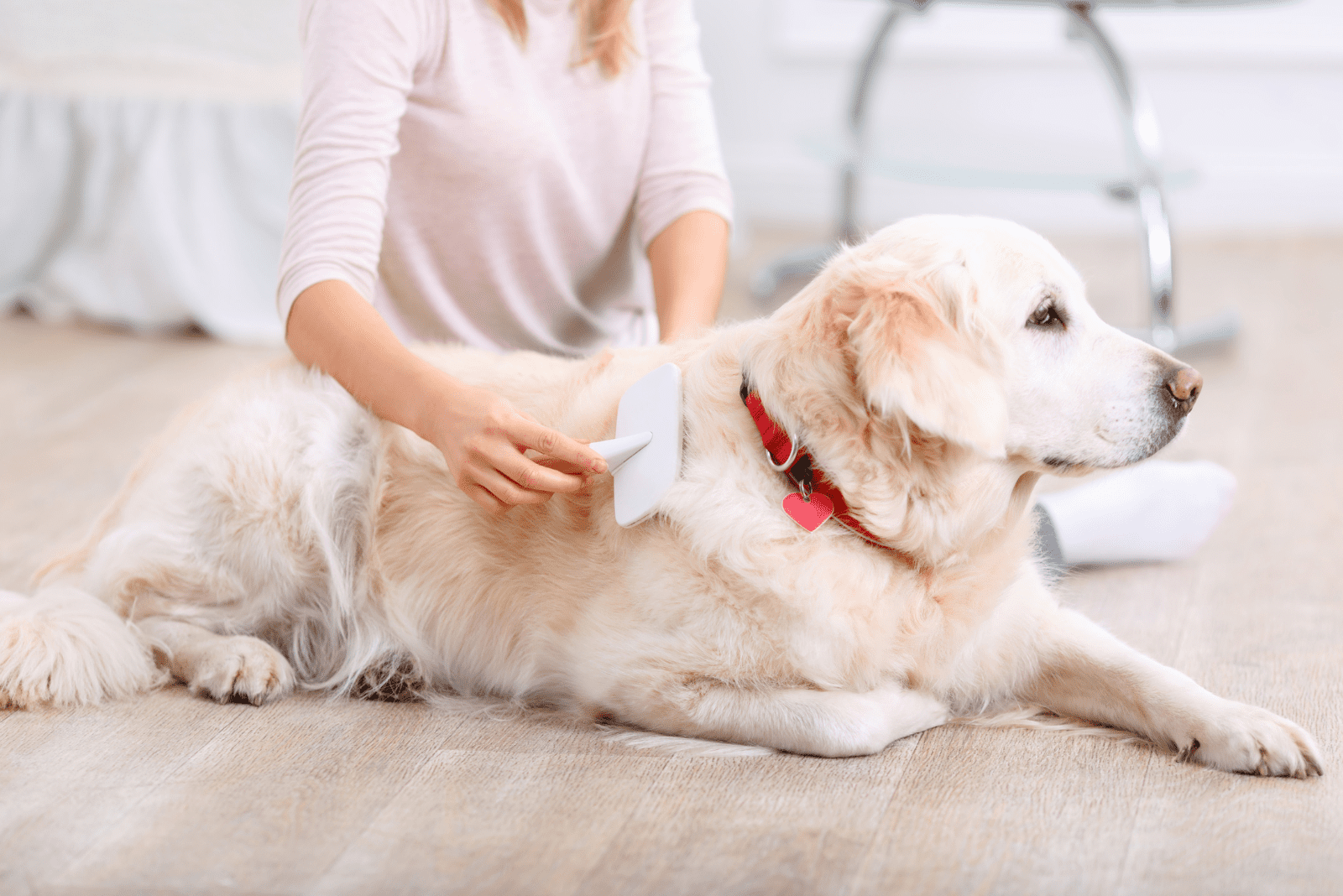
I know, I know… Grooming isn’t the favorite part of anyone’s routine. Some dogs even hate it more than their humans. But, when it comes to grooming, it’s not something you get to like or dislike. Grooming is something you simply must do.
I promise, it will pay off and your dog will like it eventually. You just need to put in lots of time, effort, and dedication.
Grooming your dog isn’t something that should be treated as an annoying thing to do. Think of it as bonding time for you and your dog. There are numerous ways out there to find a connection with your dog, and grooming is perhaps the best one.
While brushing your dog or bathing him, you build trust. Dogs won’t let just anyone come in, grab that big brush and start pulling it through their hair. That’s why a lot of professional groomers have issues with certain dogs and their grooming sessions.
Have your dog think of grooming as something fun to do. Maybe playing a little game before the session might help your dog to calm down. I used to sneak in a few treats for my dogs the first couple of times when they were groomed by me, and it worked.
Always use a soothing voice and a friendly tone. Don’t yell or treat your dog like he’s done something wrong.
What else you should use for dog grooming is coming up!
The Best Brushes
Every dog’s coat is different in its own way. That’s why we have so many different dog brushes. You can’t simply use a pin brush on a hairless dog like the Xoloitzcuintle. Those pooches require different treatments, and so do long-haired, medium-haired, and short-haired coats.
Brushing is considered to be the easiest method to stop dog shedding. And, if it’s done with the right brush, it’s even more effective.
Before you start grooming your dog, you should ask yourself a couple of questions. For starters, what kind of coat does your dog have? How often does it shed? Is it seasonal or everyday shedding?
You will pick a brush according to your dog’s coat type. The following brush types are available on the market:
bristle brush
pin brush
slicker brush
rake, usually undercoat rakes
combs
grooming gloves
About Brush Types…
Bristle brushes can be used for short-coated dogs. They give excellent shine to a coat and help get rid of any dirt. Bristles shouldn’t be too harsh or too soft. Find the one that’s just in between so your dog can get the shine and have its coat cleaned in between showers.
Pin brushes work better for long-haired dogs. Those coats are highly prone to getting matted patches and knots. Pins will help you resolve those tangles without much fuss. However, you will need to find a pin brush with rounded tips, so your dog doesn’t get scratched during the brushing process.
Slicker brushes are excellent for de-shedding! If you own a double-coated dog like a Husky, you’ll be thankful for your slicker brush. Check out the best brush picks for Huskies here!
They go deep into the coat and pick up any dead hair. Trust me, dogs like Siberian Huskies or German Shepherds will have lots of it.
What’s so brilliant about slicker brushes is that some come with retractable pins. When you push a button, the pins will go up and leave you with all the dead hair in one place. The cleaning is easy and mess-free.
Other Deshedding Tools
Dog groomers use rakes as deshedding tools, when they have undercoats, to strip extra dead hairs. Usually, rakes are used during the shedding season because dogs lose more undercoat hair then. As with pin brushes, make sure the rake’s teeth are nice and rounded for your dog’s protection.
Dog combs are also great for removing knots and tangles, but I find them more useful for haircutting. Using a dog comb will help you get a precise cut, just like a human hairdresser does!
Lately, I’ve seen a lot of these products everywhere. Grooming gloves are the thing now. They’re basically a pair of rubber gloves with bumps so you can pet your dog and have them collect loose hair while doing it.
Grooming gloves are excellent for controlling shedding. I’d recommend them for dogs without double coats as they pick up hair and massage the dog at the same time. These gloves are super easy to use and a delight to clean. You just rinse them and have them air dry for the next use.
Brushing your dog will not only get rid of dead hair, but it will also distribute natural oils evenly and make your dog’s coat shinier. A shiny coat means a healthy coat that won’t shed like crazy.
It’s Bath Time
Did you know that dogs don’t need to be bathed as much as you think?
Most first-time owners make a rookie mistake and bathe their dogs as frequently as every week. That’s the worst thing you can do to your dog’s skin. Not only will it affect the excessive shedding, but overbathing may cause severe dry skin patches and even some skin conditions.
The general rule of thumb is to bathe your dog every three months or so. Exceptions are if your dog gets very dirty. But those bath times don’t happen too often anyway.
Different dog breeds require different numbers of baths. Huskies don’t need bathing that often, but sleek-coated dogs like Dachshunds do.
What you should use in between baths if your dog gets dirty are puppy wet wipes or old rugs. Just clean the area that has become dirty and dry it.
When bath time finally comes, you should be prepared for splashing and a foam party. If your dog likes bathing, he’ll think of it as a great opportunity to have fun with you.
Dog Shampoo Recommendations
Speaking of foam… Using a dog shampoo that foams up that much may not be a good idea. Too much foam is often a sign lots of artificial ingredients were used to make that shampoo. I always recommend natural dog shampoos with soothing effects.
What’s important to know is that you shouldn’t bathe your dog using human shampoos. I’ve seen lots of owners using baby shampoos because they think they’re suitable. You may use high-quality baby shampoos if you really have no other option but try to switch back to doggy shampoos as soon as you can.
Shampoo should be rinsed thoroughly using warm water to prevent any residue that may cause allergic reactions and outbreaks.
If you maintain a normal bathing schedule using mild shampoos, you shouldn’t worry about excessive shedding. A proper bathing routine will ensure your dog has a shiny, healthy coat that doesn’t shed all the time.
Are Professional Dog Hair Dryers Worth It?
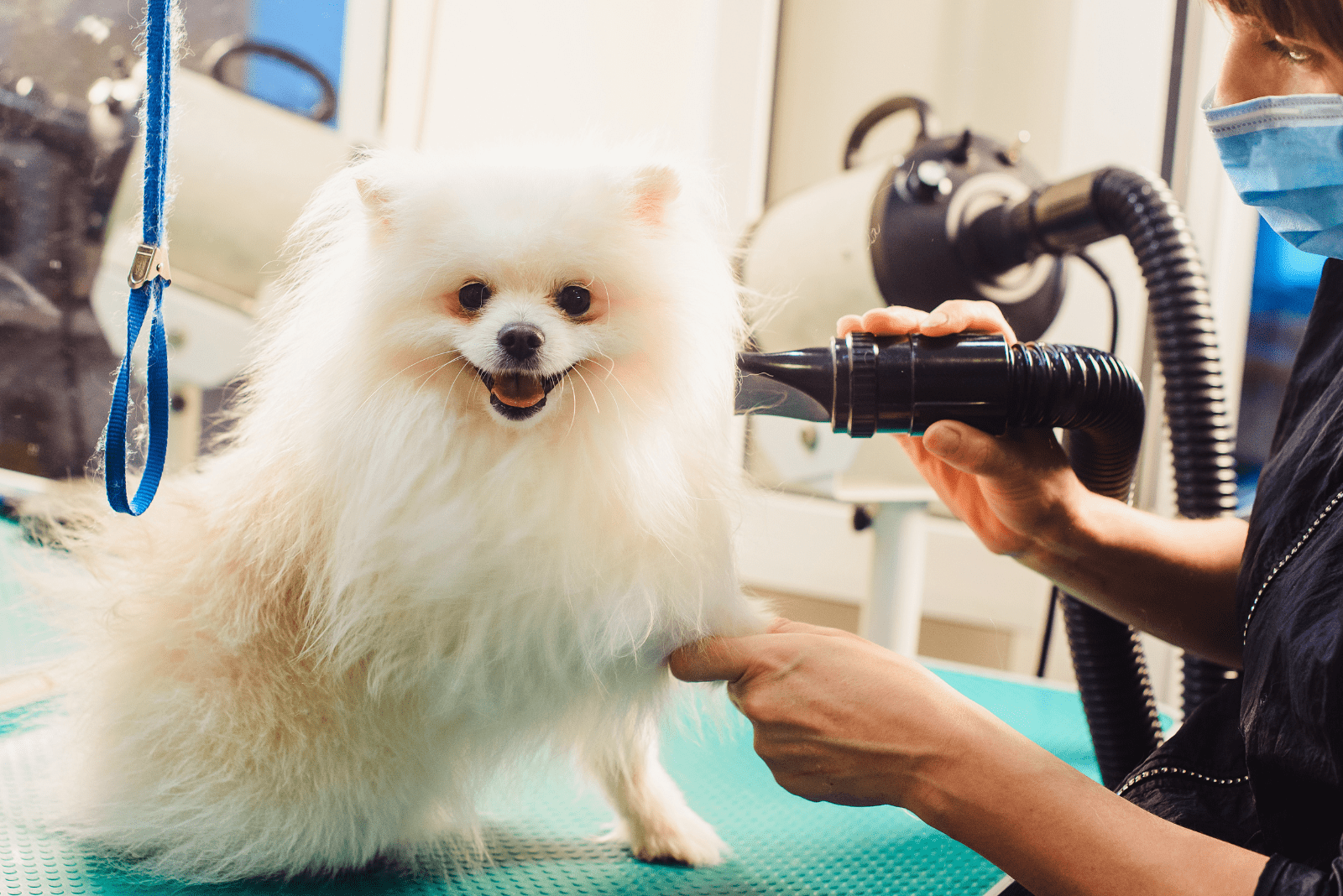
Yes, I’d say they are!
However, these professional canine hair dryers will only prove their worthiness if you have a double-coated dog like the German Shepherd.
What these dryers do is blow air like a human hair dryer and thus help any dead hair to fall off. Don’t worry, it’s completely safe, even though dogs bark at it. They just don’t like the sound of it.
Personally, I use this dryer every time my GSD seems to be shedding too much. It reduces the drying time after the baths, especially if it’s cold outside. Besides, these dryers are so effective in getting rid of loose hair, they get half of my job already done.
Brushing time is reduced to the minimum.
Even if you’re not bathing your dog that day, you can still use a blow dryer to blow off the dead hair.
If you want to groom your dog at home, despite the heavy-shedding part, you should definitely invest in a dog hair dryer. However, I’d suggest you pick a silent one to reduce the chance of your dog being afraid of it.
How Important Are Air Purifiers For Dog Owners?
Since we live in a pretty pawsome era with all kinds of gizmos and gadgets, it wouldn’t be half-bad to buy an air purifier if you decide to get a dog.
Even if you’re not allergic to dog hair, air purifiers will help a lot with loose hair as well as dander.
Now, I know they’re not cheap at all, but this is an investment for a long period of time.
Good air purifiers will catch as much dead hair and dander as they can. What’s good about them is that they come with filters (some are washable) so the cleaning up process is significantly eased.
Trust me when I say, an air purifier will help you out a lot if you’re dealing with excessive shedding. I mean, at least you won’t need to vacuum the house so often and lose the precious time you could spend on finding the cause behind the extra shedding.
When Should Excessive Shedding Worry You?
You shouldn’t be worried the moment you see the first dead hairs around the house. Your dog is still a healthy dog. But, if the problem persists, the loose hair might not be just a part of the regular shedding cycle. It may be a sign of some health issues.
I recommend you find a trusted vet so you can share your doubts every time you have them. A pet owner’s second-best friend is definitely the vet.
When you notice too much dog hair around the house, and it’s not even the shedding season, you can suspect something’s wrong with your dog. All of a sudden, your dog is acting…weird. What once was a nice, shiny coat, is now a scruffy mess.
That’s the situation in which you should call the vet. He will do a series of tests, mostly the ones for skin issues, to figure out what’s wrong with your dog’s hair growth.
As you can see, in some cases, losing hair is a sign of alopecia or even canine cancer. Such dogs need treatment asap because the next thing they might lose will be much more significant than their coat. Yes, I’m talking about their lives.
Do Pregnant Female Dogs Shed More?
Surprise, surprise! Pregnancy is a whole other level, isn’t it!
Many changes happen inside a female dog’s body. But outside changes happen too!
Pregnant female dogs can also lose a significant amount of hair, but it isn’t because of some health condition.
Pregnancy and lactation are two life stages at which a female dog loses lots of minerals like calcium. This leaves their coat shine-less and prone to excessive shedding.
Pregnancy hormones can cause hair loss, but postpartum stress is usually the main culprit afterwards. Believe it or not, dogs can experience postpartum blues and manifest it in hair loss.
What every caring dog owner should do is provide the pregnant female with a diet rich in calcium. There are lots of formulas on the market created especially for pregnant and nursing dogs. Regular brushing will help a lot with shedding.
One thing you must remember: never neglect a pregnant female dog.
What’s The Verdict?
The answer to the question of How to stop dog shedding is quite simple. You don’t. But you can keep it under control.
Coat shedding is a normal process and shouldn’t be treated as a problem with your dog. Now you know what real problems are. A few dog hairs here and there aren’t an issue. When you see chunks of dog coat on your sofa, you should be worried.
The change starts with small, puppy steps. First, check if your dog is experiencing some sort of a change. Is he under stress? How’s his diet? Does he drink enough water? How’s his health status? Dogs with skin conditions experience extensive hair loss more than others.
Always play it safe and have your dog examined by the vet. Dog shedding may not be a big issue, but it might become one if you don’t treat it. Now that you know what the ways of reducing dog shedding are, you can apply them to your dog.
Read Next:
• Disclosing The Info: How Much To Tip A Dog Groomer
• How To Get A Sick Dog To Drink Water? Help Is On The Way
